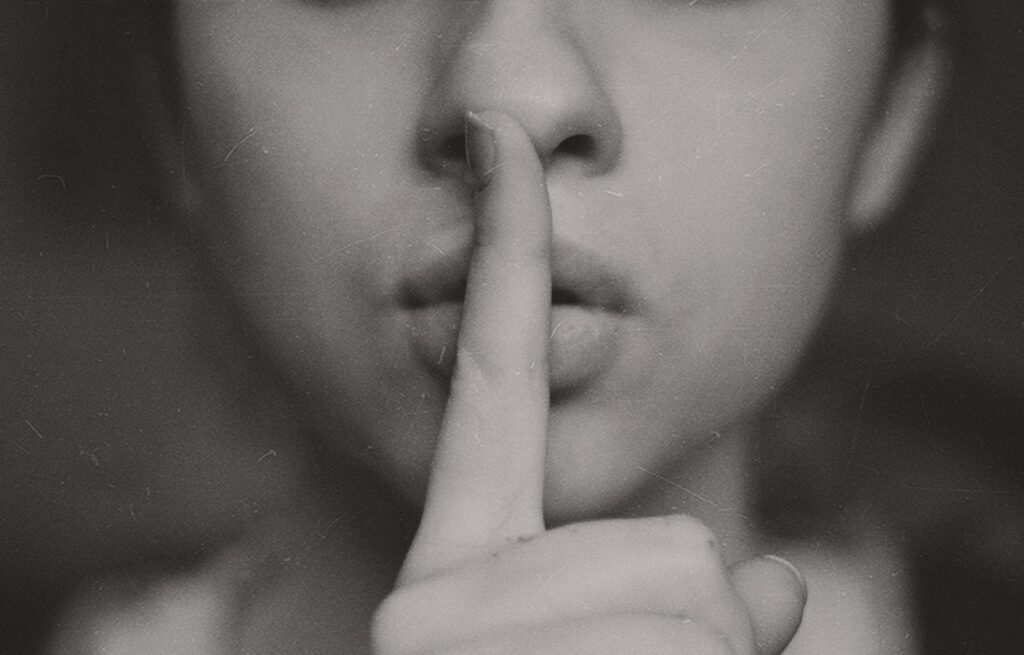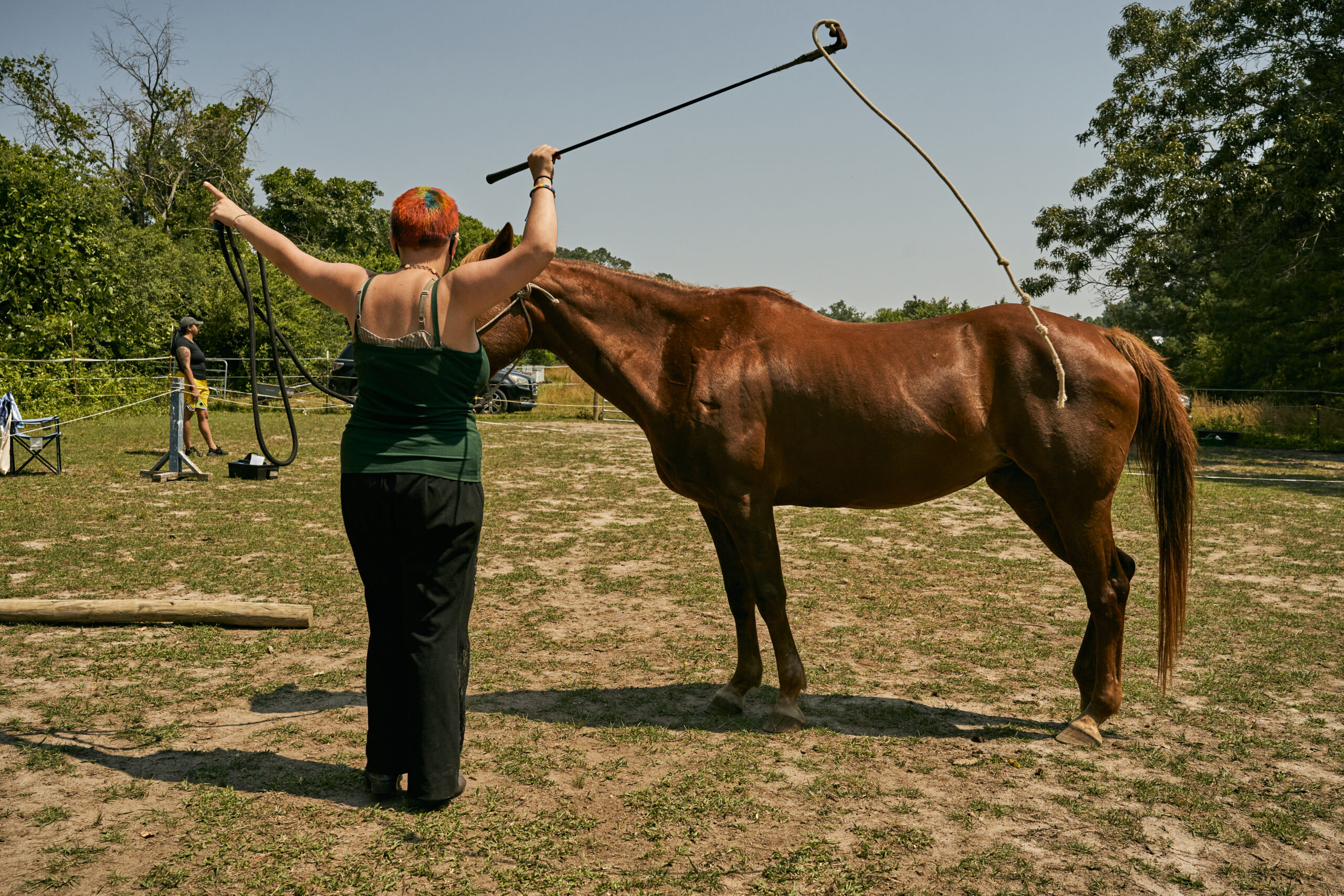
In the wake of numerous accusations of sexual predation in Hollywood and the deplorable crimes of sexual abuse Larry Nassar inflicted on hundreds of young girls, the widespread harassment and abuse of women is finally causing a stir. That said, nothing seems more important than teaching young girls the importance and power of voice, which is something CORRAL is doing to help at-risk girls.
These girls are overcoming barriers and obstacles in an attempt to heal from traumatic experiences and to gain their voice.

Unfortunately, the coming forward of countless women like we have seen with the #MeToo movement has raised age-old questions about women’s voices creating additional barriers to empowerment.
Women have long been ostracized for speaking out against discrimination and abuse. Consider the events surrounding and leading up to the women’s suffrage movement.

For centuries, silence has been a condition and consequence of being a woman. The notion of “being seen but not heard” is not just reserved for children.
These patterns of subjugation are difficult and painful to dismantle because they rely on women’s forced complicity, silence, and internalization of their role as usable commodities.
And socializing women to accept that their value can only be determined by the extent to which their body is sexually desirable and usable bolsters the culture of abuse. It is never more important for women to speak out, break the silence and recognize the power of voice.
But before that can happen, we need to understand and recognize the pervasiveness of silence for it has a long history littered with many types.
Not all silence is bad. Sometimes it is strategic. Sometimes it is dangerous. Sometimes it is unforgivable. And sometimes it is a woman’s right.
Silence as Strategic
As counterintuitive as it may sound, silence can be strategic, when used in the appropriate way. Silence tends to make people, especially Americans, so inherently uncomfortable. I used to teach Public Speaking courses and nothing made my students more unsettled than when I required them to pause for effect at the end of their speech. It is how you leave a lasting impression, I would tell them.

I started doing an exercise where they would have to stand at the podium for seven seconds at the conclusion of their speech and make direct eye contact with as many members of the audience as possible.
I would see the beads of sweat form on their foreheads and the facial flushing start but more than that, I could see the impact those last few words could have on an audience.
Through those exercises, students learned that we have to become comfortable enough with silence to know when and how to strategically use it. I believe that transfers to all aspects of our lives.
Moreover, as legal scholar Dorothy Roberts has said, when silence is used appropriately in a classroom for instance, the teacher is able to subvert the masculine, male-dominated style of speech that is so pervasive in our American classrooms.
By breaking through the fast-paced aggressive banter typically dominated by white, male students, silence allows less aggressive students of color and also female students to compose their thoughts and to participate.
Undoubtedly, silence can be powerful. But when is silence harmful?
Silence as Dangerous
Women often have to ask themselves: How can we balance the act of not speaking without losing self and yet speak without losing the game?
Allow me to share a story. I once read about a high school teacher who lead a simple, powerful exercise to teach his class about privilege and social mobility. I have incorporated this same exercise into my own classes but focus the discussion around voice (or lack thereof).

Picture this: You are sitting in a tiered classroom with four rows of seats. You are given a piece of paper and told to crumple it up. A recycling bin sits at the front of the classroom.
The teacher says: “The game is simple — you all represent the country’s population. And everyone in the country has a chance to become wealthy and move into the upper class. To move into the upper class, all you must do is throw your wadded-up paper into the bin while sitting in your seat.”
Everyone takes their shots and as expected most of the students in the front made it and only a few students in the back of the room made it.
The moral of this story is that the closer you are to the recycling bin, the better your odds of getting what you want or what is necessary to survive and live a good life.
This is essentially what privilege looks like.
Where the danger of silence factors in is that only the students in the back of the room truly experience how unfair this exercise is. They can see the rows of students in front of them having a much better chance at making the basket.
Thus, the only students who are likely to complain about fairness are those in the back of the room who also have the quietest voices. By contrast, people in the front of the room are less likely to be aware of the privilege they were born into and thus, they say nothing (either out of ignorance or lack of empathy).

All they can see is 10 feet between them and their goal.
Silence can be dangerous for both the marginalized and the non-marginalized. When you have an idea about how to stop injustice or abuse (whether you are the victim or just a witness) but instead you say nothing and just hope your “aim” is accurate, this abdicates control and allows for the status quo to remain in tact.
Not asking for help is dangerous and can have horrific repercussions.
However, by seeking clarification or asking if you (or someone else) can come closer to the recycling bin to increase your chances of success helps bring important issues to light.

But if we as witnesses or victims remain silent, we are unable to do this. Instead, everything is being left to chance and the power of our voice is left unheard.
It is our job (as educators, teachers, students, counselors, administrators, etc.) to be aware of our privilege and the power of our voices. And then we need to use this particular privilege called “education” to do our best to achieve great things, all the while advocating (and sometimes speaking) for those in the rows behind us.
Silence as Unforgivable
Building off the previous privilege metaphor, you’ve seen the ease that folks closest to the recycling bin have and the difficulty the rest of the room has. In many ways, observing first hand the trauma and difficulty that some people experience but then doing nothing to help is particularly problematic because it suggests that we are complicit with perpetuating a cycle of abuse or injustice.
Interestingly, the research on bullying (both in personal and professional spaces) has suggested that complete inaction by bystanders or witnesses to traumatic/abusive events can lead to perceptions of tacit support for the bully or aggressor.
It’s unforgivable to remain silent and hope that everything will work out or that someone else will deal with the problem. When the “problem” is something as egregious as sexual abuse, those with the loudest voices need to speak up whether it’s the victim or the bystander.

Regardless of our position, we need to stand up to discrimination and abuse. If you are the one experiencing an injustice, maybe it’s time to say: “I can’t do this alone.” Ask someone in the “front row” to help “pick up your pieces” if you miss the shot.
It is becoming imperative to become our own advocates especially if it’s clear no one else is willing. This has never been more important for young women.
Rarely do we get second chances to make up for our silences.
However, there are times when women and other marginalized groups have the right to choose when and how to use silence.
Women’s Right to Silence
Let me be clear when I say that women and girls should not feel pressured to speak up all of the time. It must be a safe, deliberate and free choice to do so.
And importantly, silence should not be confused with voicelessness.

The more we understand the operations of sexual abuse and its reliance on the violent silencing of women, the more we can make women’s silence heard.
Medieval female mystics and visionaries saw silence as a form of self-reflection, contemplation, and time for spiritual and physical healing. When it creates spaces for resilience, self-belief and self-care, silence speaks very loudly. We can hear it and, like all types of women’s voices, it has the right to be heard.
Going back to the recycling bin metaphor, the folks in the last row fall into this category. Like everyone, we all have a right to silence but we don’t necessarily have to exercise that right (and sometimes we shouldn’t).
For instance, the folks furthest from the recycling bin and with the least likely chances to make their shot can turn to the person next to them and ask for help.
But they can also remain silent too. However, if they remain silent, their likelihood goes down of scoring a basket. So in this case, why not use your voice to get assistance?

For centuries a “code of silence” has kept many young women (and some men) from reporting crimes of abuse. Thanks to organizations like CORRAL, we have started to better empower young girls and women.
It is time we end that silence and recognize the power of our voice.
……………………………………………………………………………………………………..

About the Author:
Associate Professor, Dept. of Communication Studies
University of North Carolina at Charlotte
Dr. Jaime E. Bochantin has been teaching for over 11 years, at both the undergraduate and graduate level. Her current research examines work-life/family, stress and well-being, organizational conflict, leadership communication, and workplace mistreatment including incivility and bullying.
Dr. Bochantin is a professional speaker and has been invited to present her research at institutions like Harvard University’s School of Business and School of Government, Loyola University’s School of Business, and the University of Hawaii. Throughout the year, she provides training and development workshops for a number of for-profit and non-profit organizations. Presentation topics include team building, networking techniques, effective mentoring, behavioral selling, conflict resolution and negotiation, leadership communication, developing a professional brand and generational differences in the workplace.





